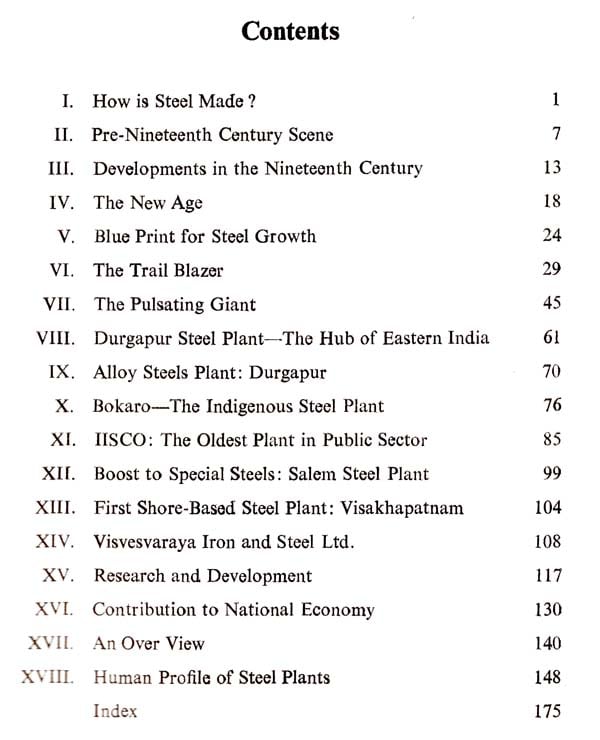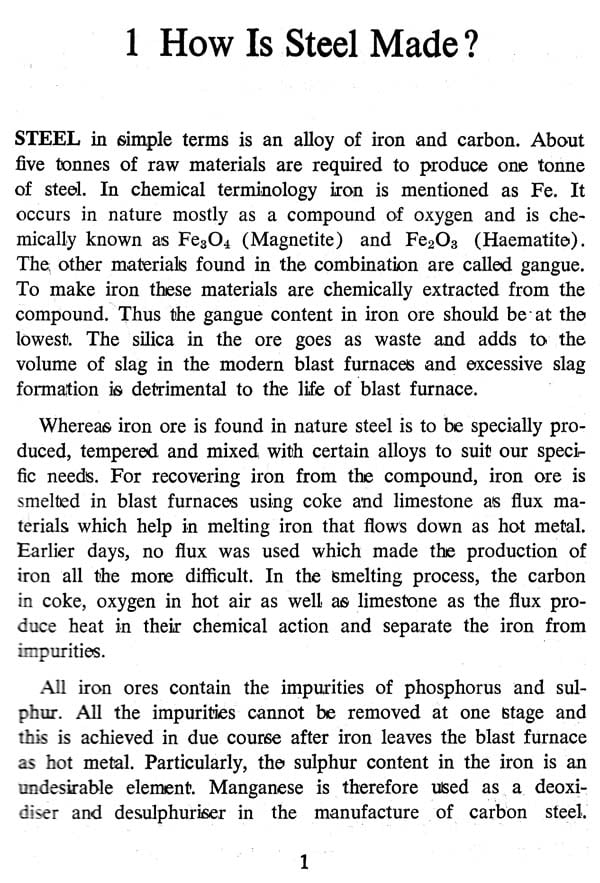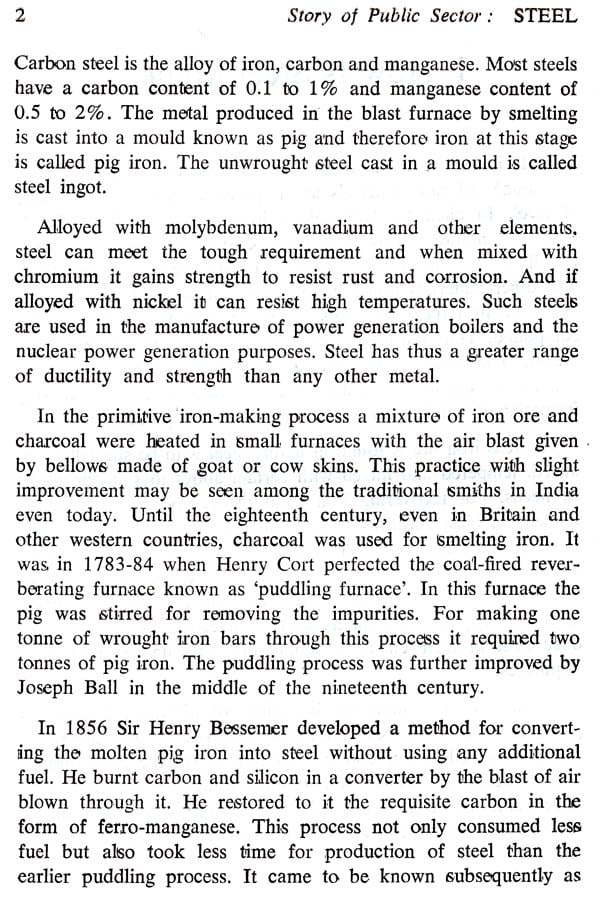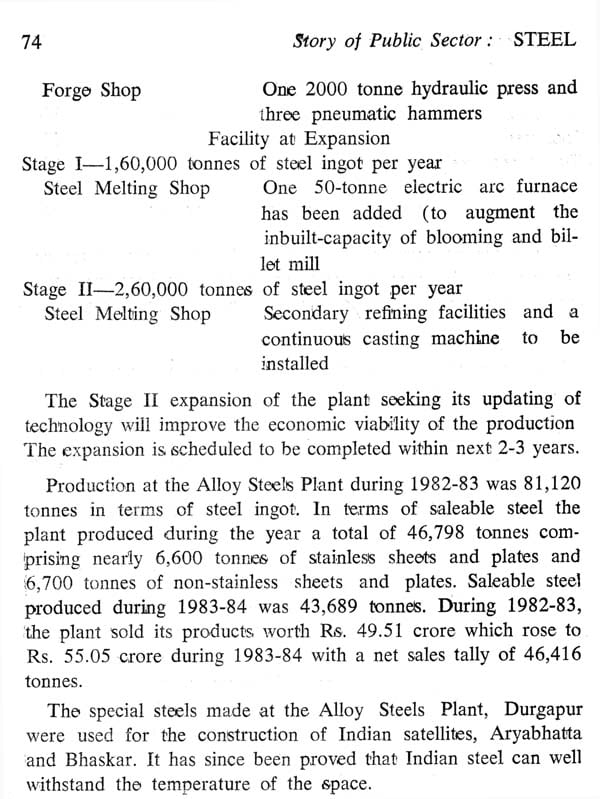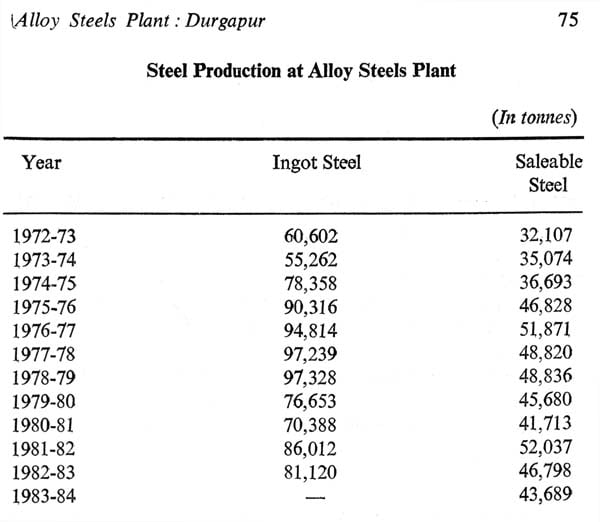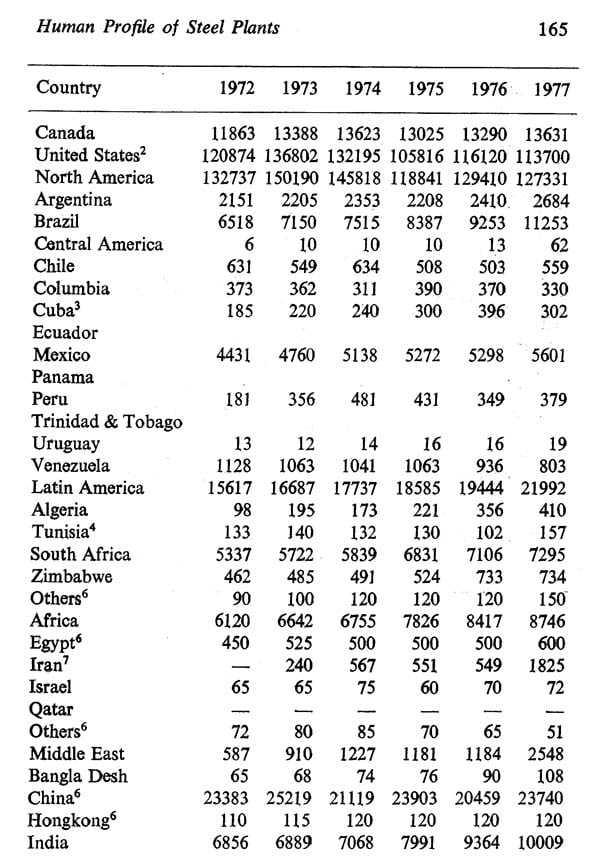
Steel- Story of Public Sector
Book Specification
| Item Code: | NAU735 |
| Author: | Manohar Bandopadhyaya |
| Language: | English |
| Edition: | 1987 |
| Pages: | 182 |
| Cover: | PAPERBACK |
| Other Details | 8.00 X 5.50 inch |
| Weight | 220 gm |
Book Description
Even as India is one of the earliest producers of steel, Indian steel industry languished over the centuries for it hardly ever received a meaningful impetus either from the private enterpre-neurs or the then rulers. Eventually it was untouched with the new methods and developments taking place in other parts of the world at least till the close of nineteenth century. Yet the alche- my of steel making in India passed on from generation to genera- tion in specialised clans and the ancient steelmakers have left ample obelisks of their metallurgical genius as has been describ- ed in this volume.
Boost to steel production is quite inter-related to the theory of demand and supply. With the growth of industries and the ad- vent of railways, the steel industry in India underwent some posi- tive transformation in the last quarters of nineteenth century and the first three decades of the twentieth century. A tangible fillip to steel production and its sustained growth was however given only after independence when the country marched on to industrialisa- tion espoused and expressly helped by Pandit Jawaharlal Nehru. Within a decade of independence the Government of India under- took to set up as many as three integrated, steel plants and further strove to achieve indigenous capability for even designing and setting up new plants. Including the alloy steels plant at Durga- pur we have today eight steel plants in public sector and there are proposals for ,the construction of two-three more steel plants. The steel production in the country has already increased by over 500% since 1947.
But then the steel industry requires a fairly long gestation period to show its worth and it would be too rash a conclusion to assess the success or failure of the industry just on the basis of investment. On the face of neglect over the centuries if the industry has made rapid strides it was because the Government took saga- cious timely step to set up the integrated steel plants under pub- lic sector so that these did not languish for one reason or another. Similarly, quite as the cost of steel is dependent on the cost reduc- ing process being developed all over the world, the capacity utilisation too is not in isolation of the availability of the raw materials and inputs in right proportion and quality. Any tilt in these two aspects will affect the utilisation of capacity. In view of high energy consumption and depleting reserves of coking coal Indian steel industry is in a critical state. All these aspects have been evaluated during the discussion on the steel plants in the country under public sector.
This book has been written with a view to acquaint the general readers with the genesis and growth of Indian steel, laying special emphasis on the public sector steel plants. There is, therefore, no discussion on the private sector steel units though their con- tribution to the national steel scene has been noted whenever call- ed for. As the book is for general appraisal, technical details and minute aspects of the erection and operation of the units of the plants have not been taken for illustration. The major thrust has been laid on the construction of the plant, production and pro- ducts as well as the contribution to the economic mainstream of the country. The chapter on the human aspect of steelmen in- cluding their training has been added after much deliberation since it is a general curiosity for the readers to know about the man behind the machines.
In writing this book, I have made abundant use of publications of the Steel Authority of India Limited with which I were once connected. Unfortunately, the author suffered an irreparable loss in the sudden demise of Mr S. K. Bishnoi, Jt. Director of Public Relations of the Steel Authority of India Limited who had pains- takingly gone through the manuscript and suggested certain changes which have since been incorporated in this volume. The book is dedicated to the fond memories of the late Mr Bishnoi who strove to dispel many misnotions about the public sector steel industry in India and kept the media informed about the growth and performance of the industry in right direction.
Finally, I would fail in my duty in not recording my doubtful gratitudes to Mr K. N. Sud, former Assistant Editor of The Hindustan Times, Dr S. S. Shashi, Director of Publications Divi sion, Mr H. L. Dar and Mr V. V. Prasad for continuously inspir ing me during the period of its writing as also to Dr J. Bhagya-lakshmi, Editor, Publications Division who virtually chased me ruthlessly with all good intentions and patience to see the work Come through.
**Contents and Sample Pages**
